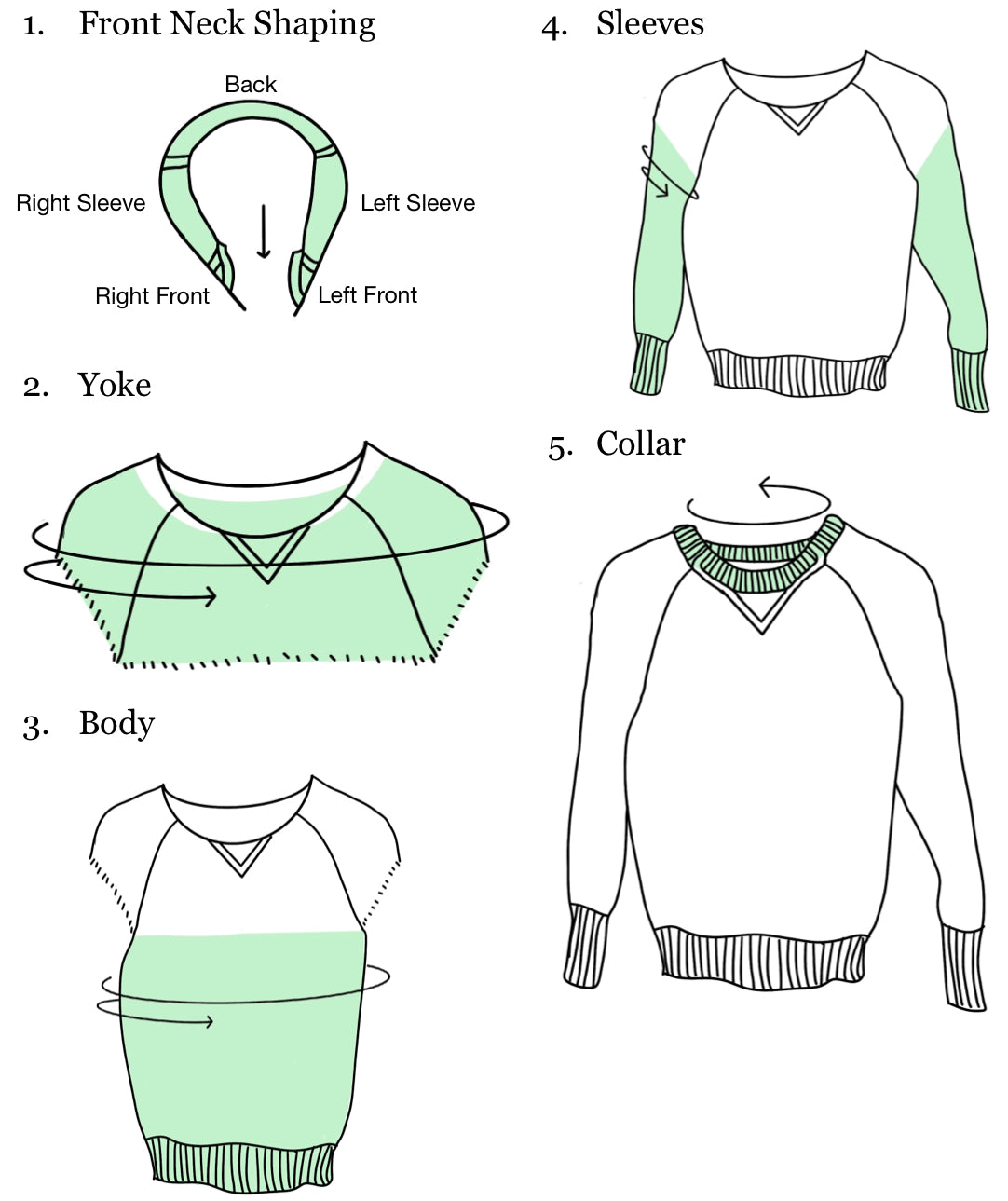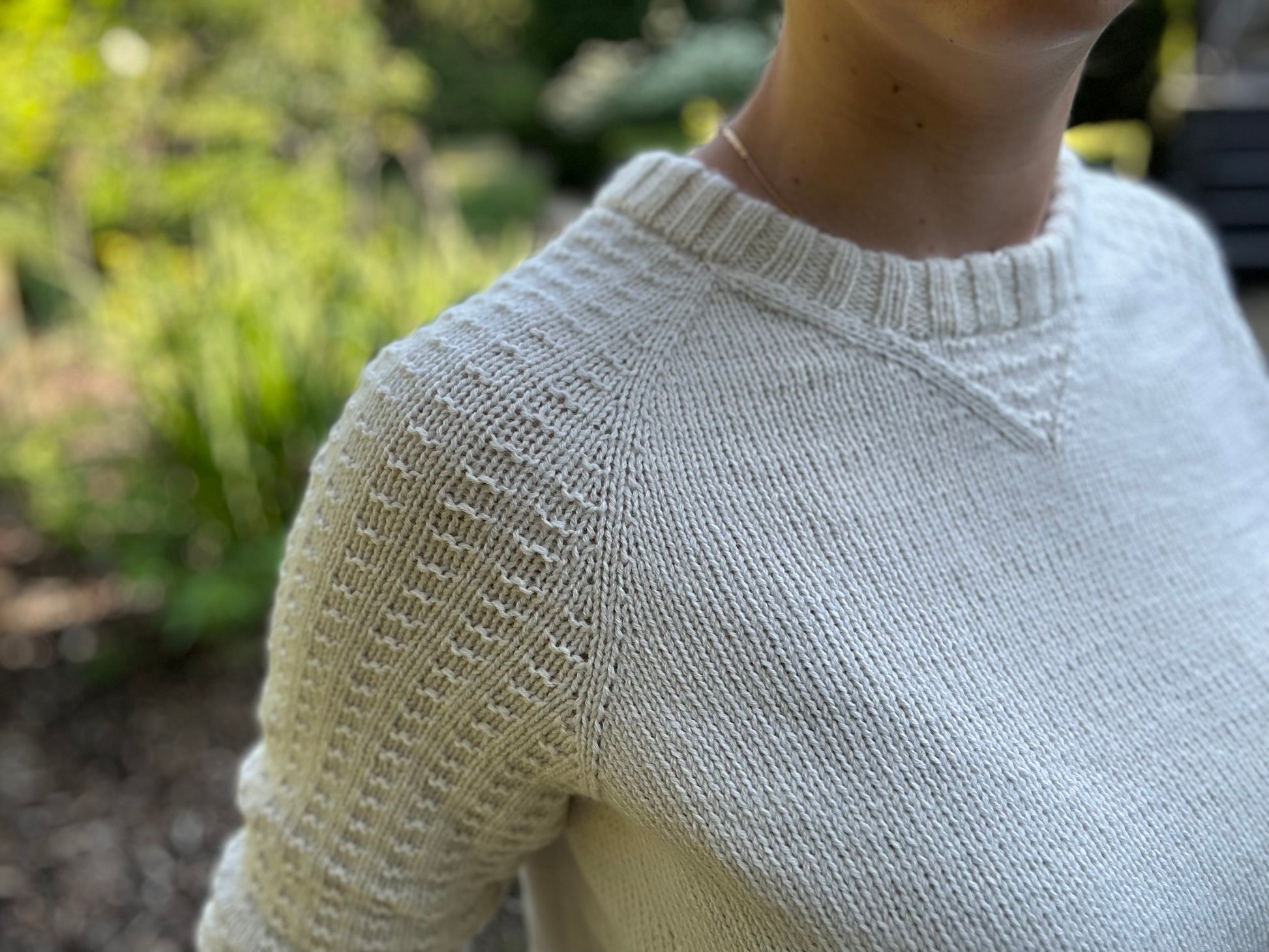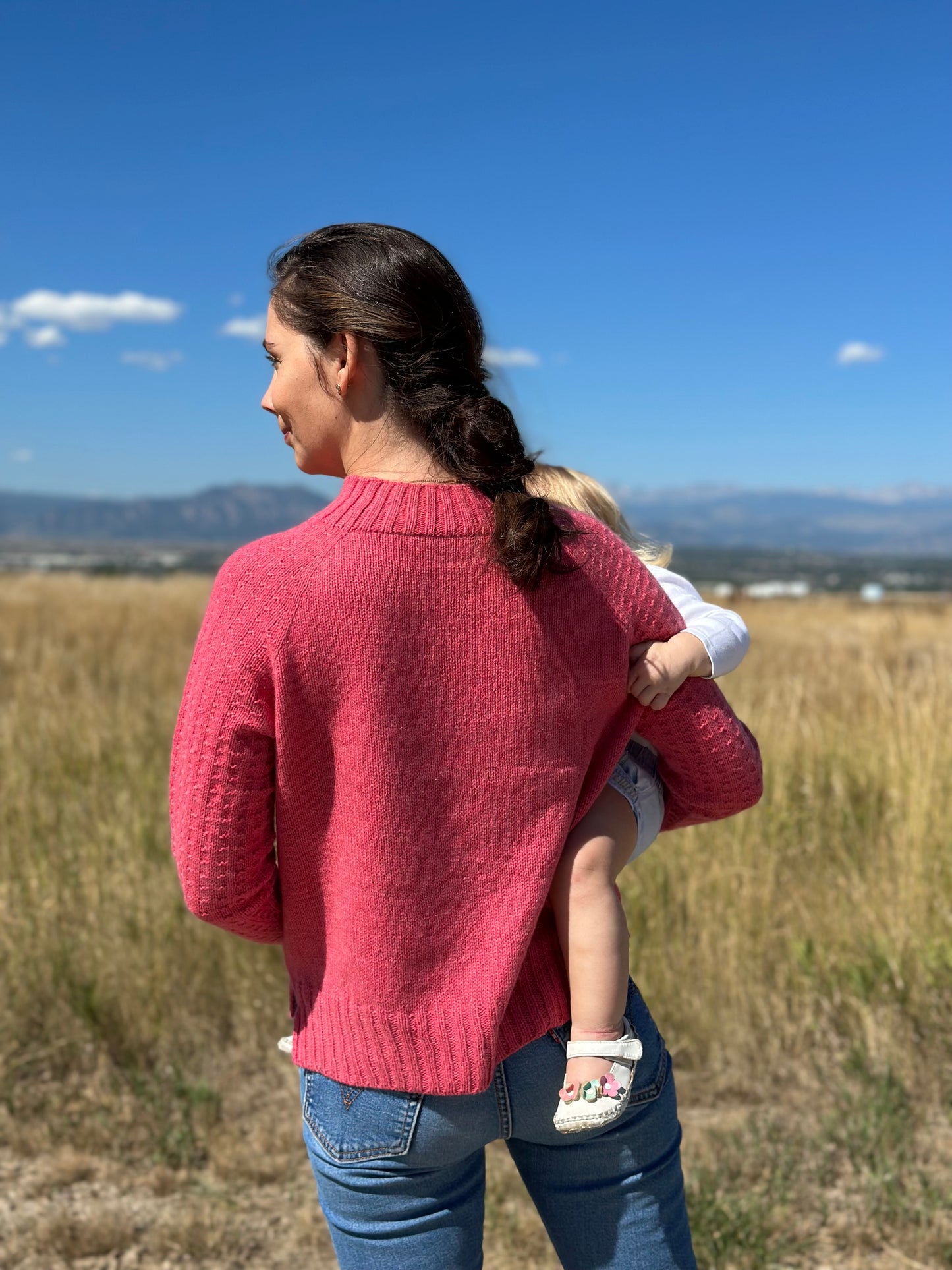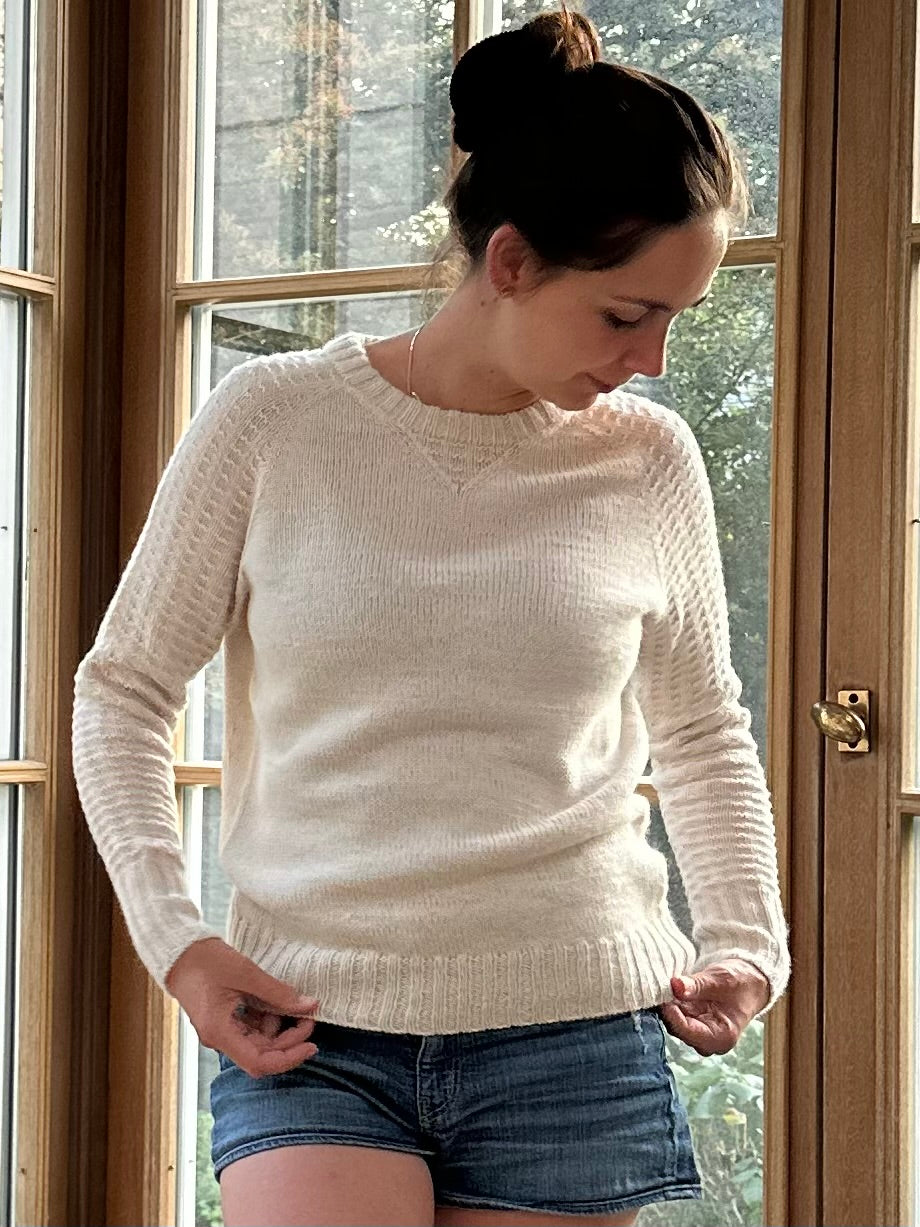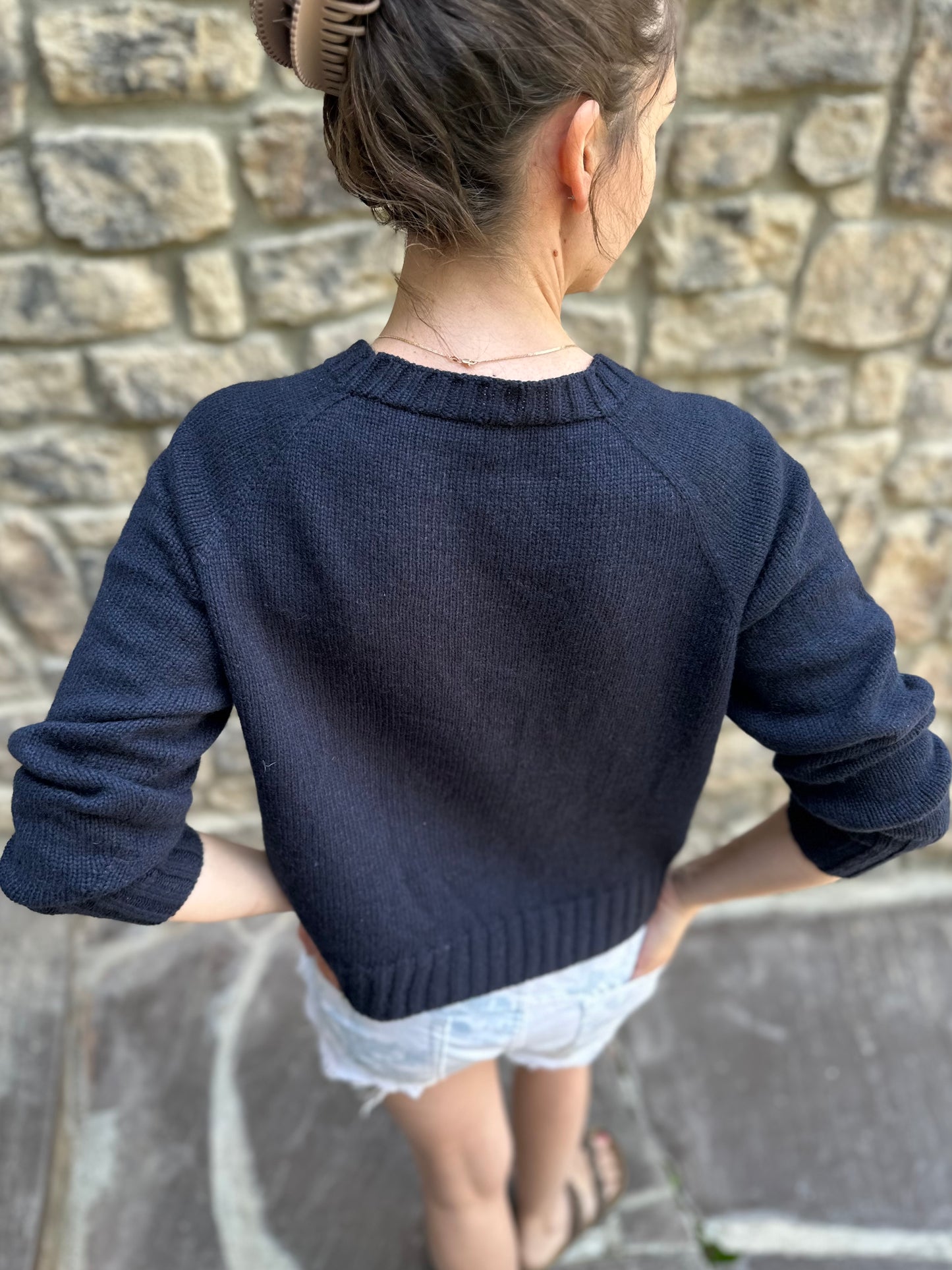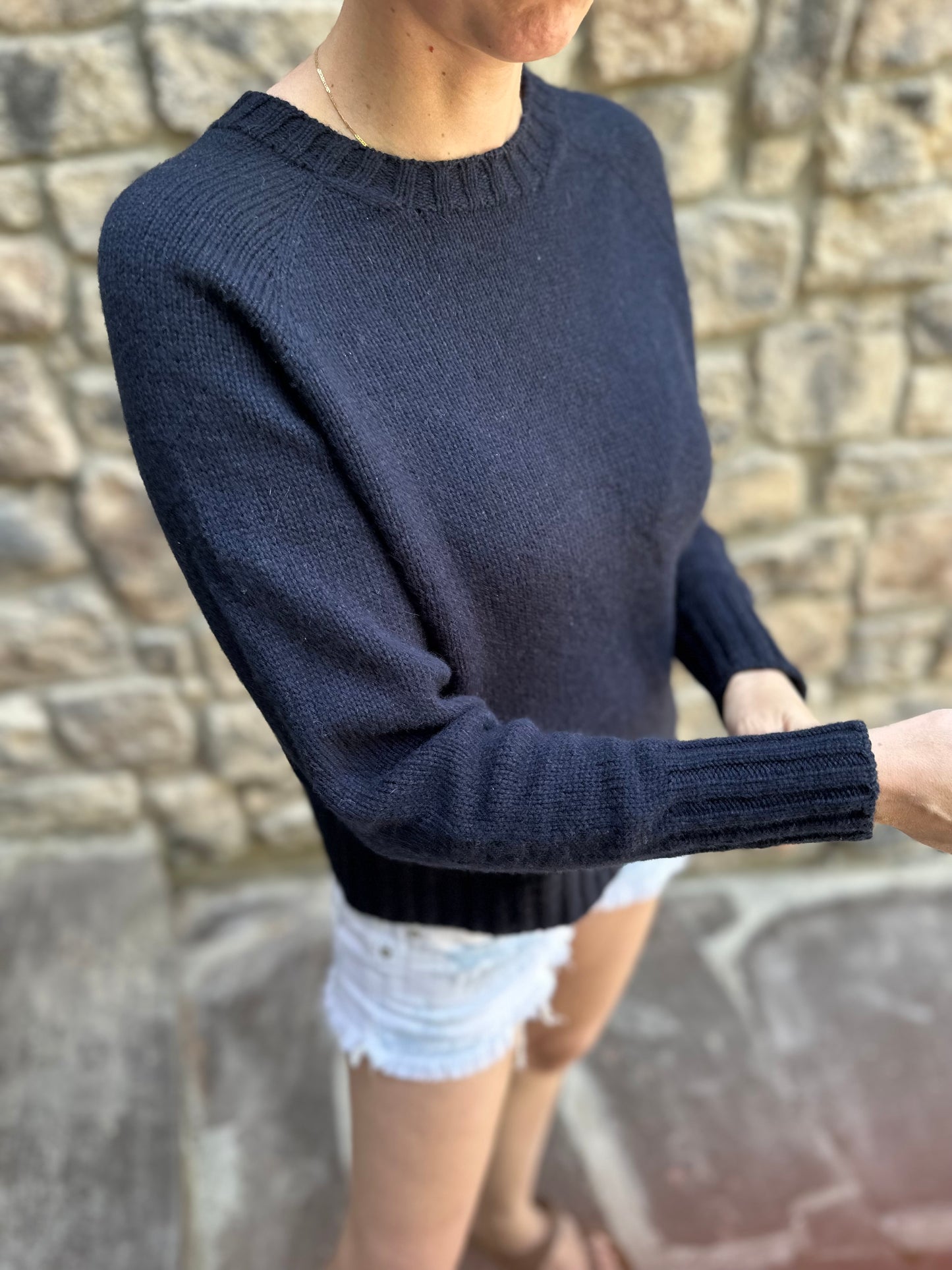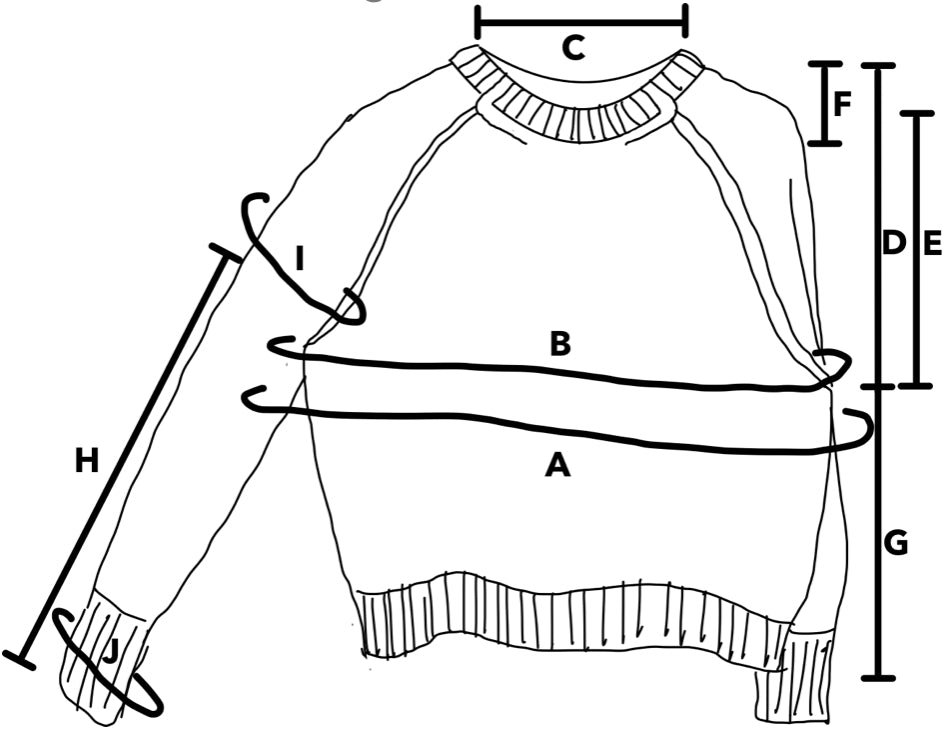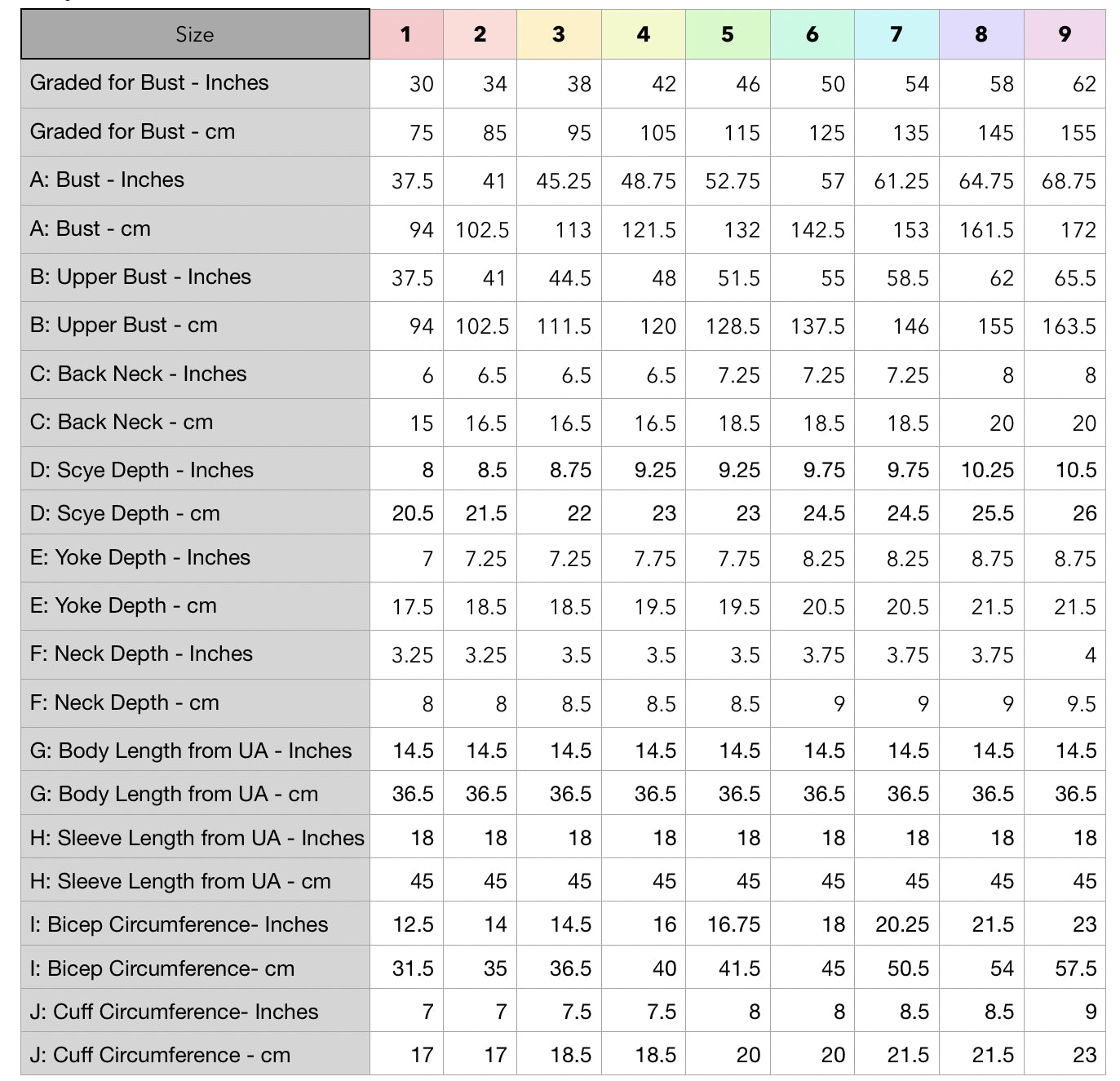This diagram illustrates the construction of the Gaufrette Raglan, a top-down raglan construction with neck shaping.
1. Front Neck Shaping. Stitches are cast on and markers are placed to separate the back, sleeves, and fronts; indicating the raglans. Very few stitches are cast on for each front, and the front necklines are increased at the same time as the raglans. For a classic construction, the front should end up with the same number of stitches as the back once neckline shaping is complete. For a standard crew neck, take the back neck cast on stitches and divide them in half to calculate the front neckline cast on, the remainder should be increased evenly at the neckline edges. Once all these increases have been worked the center front is cast on and the piece is joined in the round. This method makes room for the front neck, which sits considerably lower than the back neck on our bodies.
2. Once the piece has been joined in the round, the yoke continues to be shaped with increases at the four raglans. The Gaufrette is a compound raglan, where the increase rate does not stay the same for the entire yoke, and where the body and sleeve stitches are increasing at different rates. Compound raglan shaping on the body usually includes rapid increasing at the top and the bottom of the raglan with a stretch in the middle with a slower increase rate. The sleeves on the other hand tend to start with a slower increase rate, which then picks up further down the raglan.
3. Once the yoke is complete a round is worked where the sleeve stitches are placed on hold, and stitches are cast on for the underarms. The body is then continued in the round. I like to think of the body as a blank canvas. Some patterns will specify body shaping or include bust darts. If this is not specified you can add your own, for example if your hips are wider than your bust you may wish to add hip shaping or A-line shaping to the body. The Gaufrette includes bust darts, and modification guidelines for adding body shaping. It also doesn’t reach the full bust circumference for most sizes at the underarm, instead including shaping below the underarm to get to that final circumference. This helps cut back on the excess fabric we often see at the underarm.
4. Next the sleeves are worked. The stitches that were placed on hold are put back on the needles, and stitches are picked up from the underarm cast on. The sleeve is then worked in the round. Sleeve shaping can completely change the look of a sweater. The Gaufrette has an elegantly tapered sleeve, with a significant amount of shaping concentrated below the bicep. If I had chosen to work the sleeves without shaping, and then included rapid decrease rounds before the cuff it would have resulted in more of a balloon sleeve.
5. Finally, stitches are picked up around the neckline and the collar is worked. I listed this at the end, but many knitters prefer to work the collar as soon as possible, as it gives a more accurate sense of yoke fit.
Short Row Neck Shaping

As an alternative to step 1, the collar can be worked first in the round, and then short rows can be worked to add depth for the front neck.
Notice that these extend all the way into the front stitches, to closely mimic the shape that results from shaping the neckline with increases. Short rows worked only across the back neck will address a rounded back, but will not make room for the front neck (and may cause an unintended bump of fabric). Ideally the majority of the short row turns are placed toward the front of the garment. I would recommend starting the first turn about halfway through the sleeve stitches.
Raglans without either option tend to have very high necklines, and the front collar can feel like it’s digging into your neck. To mitigate this, some designers will choose to have a very wide neckline. Alternatively, a large amount of stitches can be cast on for each sleeve. Half of the sleeve cast on adds to neckline depth, so a 5” sleeve cast on would result in ~2.5” neck depth. The drawback here is that the necklines frequently end up being very large, and can cause the raglan to slide around on the shoulders.
For a deeper dive into the key fit points of this construction, check out the Great Fit blog post about it.

